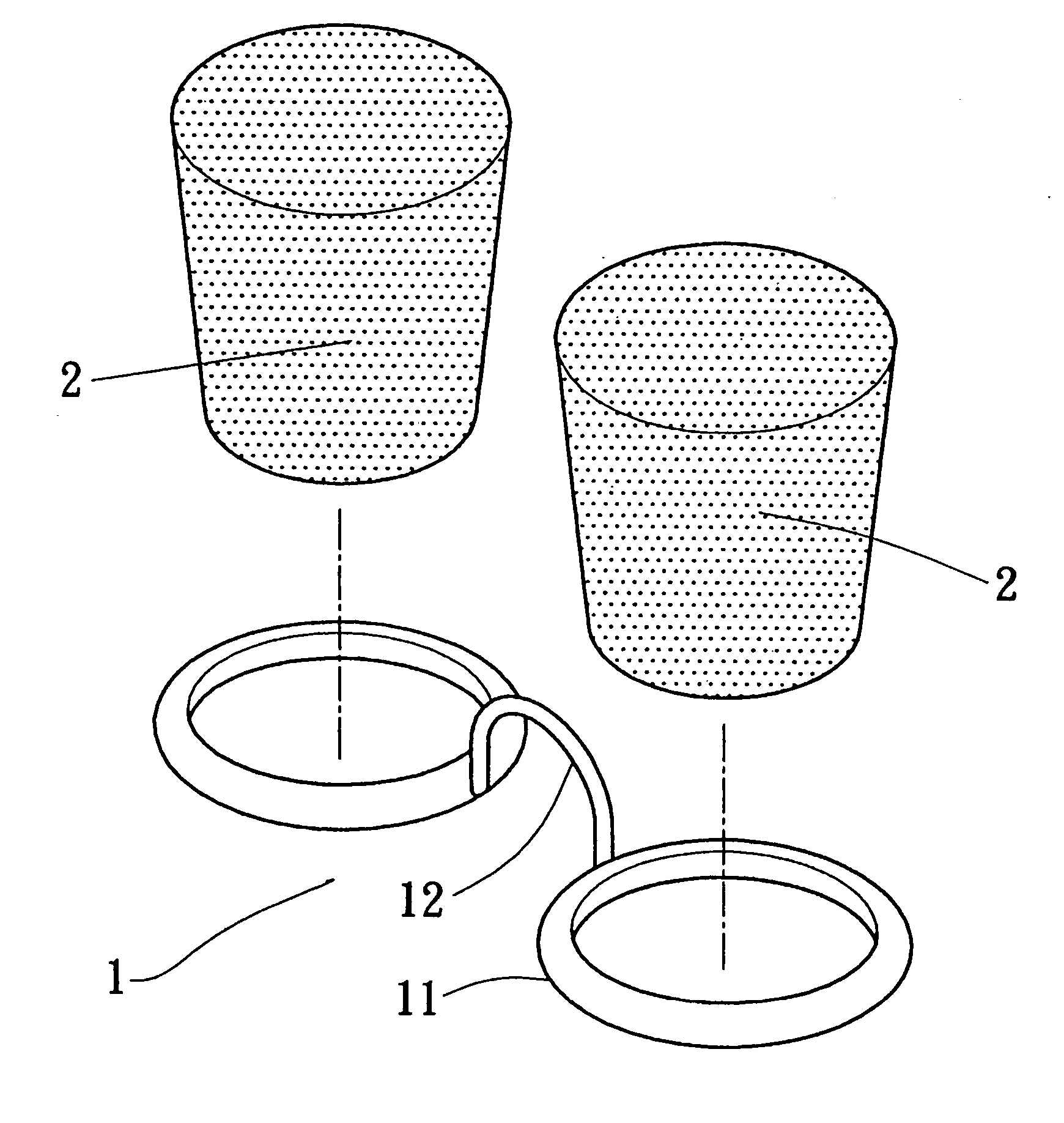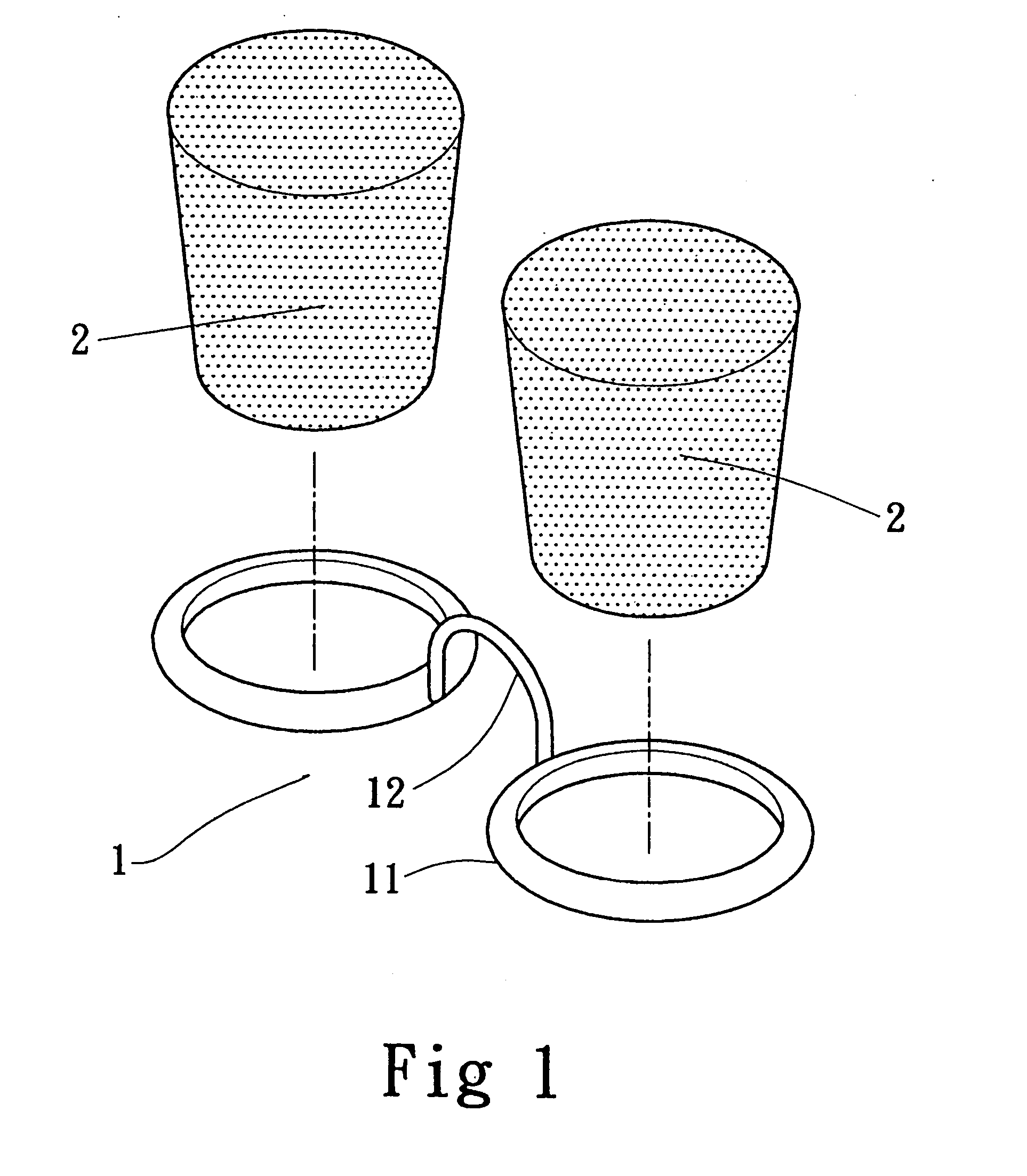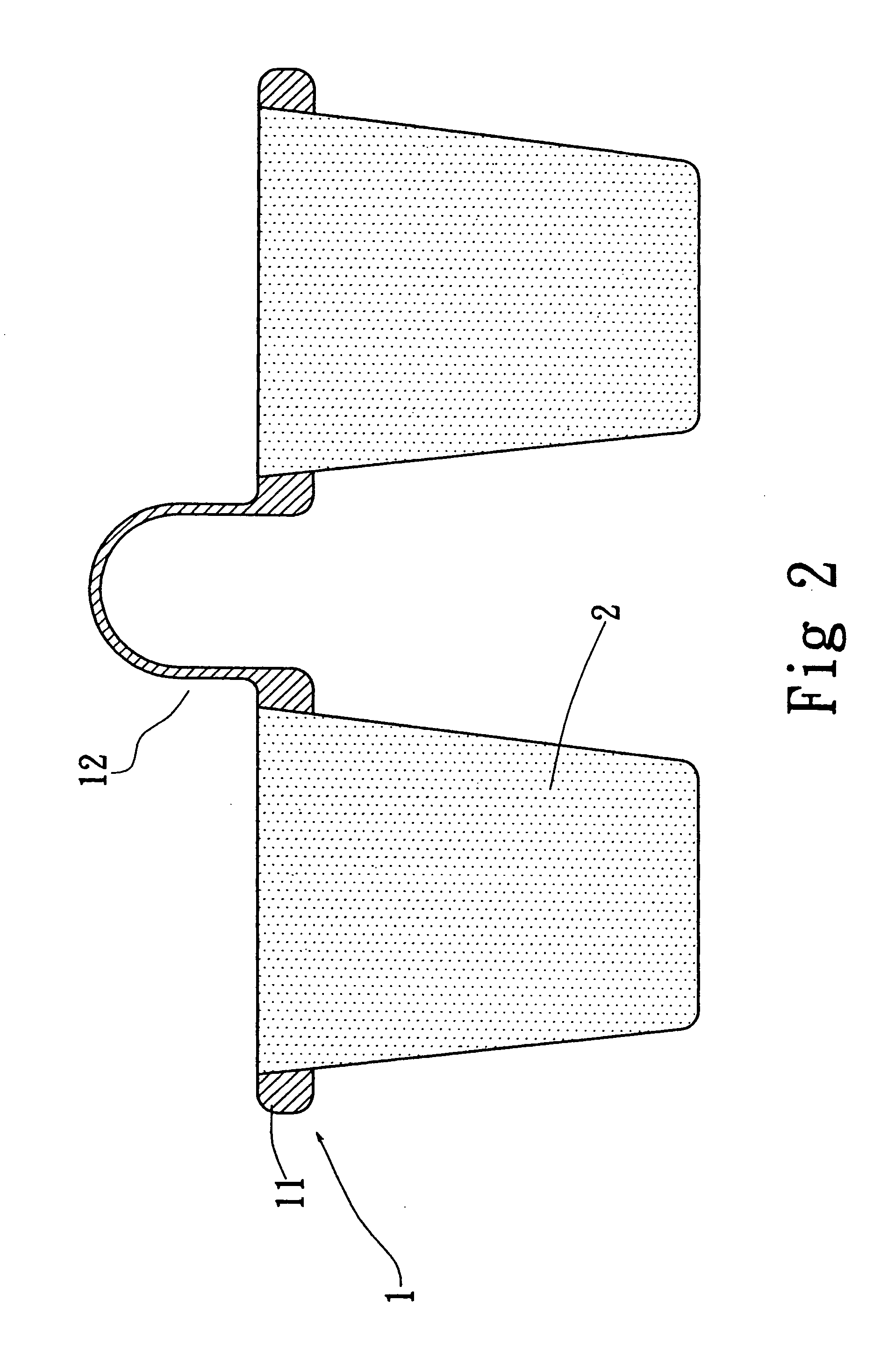Filtering assembly in nasal cavities
a filtering assembly and nasal cavity technology, applied in respirators, separation processes, treatment rooms, etc., can solve the problems of inability to effectively filter tiny particles by the masks cannot perfectly match the contour of wearers′ faces, and can not be effectively filtered by nose hairs in noses, etc., to achieve the effect of low cost and easy manufacturing
- Summary
- Abstract
- Description
- Claims
- Application Information
AI Technical Summary
Benefits of technology
Problems solved by technology
Method used
Image
Examples
Embodiment Construction
[0015] Referring to FIGS. 1 to 3, the filtering assembly of the present invention comprises a connector 1 which includes two rings 11 connected by a link 12. The link 12 is a curved link and can be made by plastic material. Two filtering members 2 are securely connected to the two rings 11. The two filtering members 2 are directly inserted into the nasal cavities of the wearer to filter foreign objects such as the tiny particles of pollutions from entering into the wearer's lungs. The filtering members 2 are secured to the rings 11 by way of heat fusion, gluing or any known methods.
[0016]FIGS. 4 and 5 show another embodiment of the filtering members 2 wherein the two filtering members 2 each have a flange 21 extending outward from an end thereof and the flanges 21 are secured to two respective top surfaces of the rings 11.
[0017] FIGS. 6 to 8 show another embodiment of the filtering assembly wherein each of the rings 11 includes an engaging slot 111 defined in a top surface thereof...
PUM
| Property | Measurement | Unit |
|---|---|---|
| Pressure | aaaaa | aaaaa |
| Heat | aaaaa | aaaaa |
Abstract
Description
Claims
Application Information
 Login to View More
Login to View More - R&D
- Intellectual Property
- Life Sciences
- Materials
- Tech Scout
- Unparalleled Data Quality
- Higher Quality Content
- 60% Fewer Hallucinations
Browse by: Latest US Patents, China's latest patents, Technical Efficacy Thesaurus, Application Domain, Technology Topic, Popular Technical Reports.
© 2025 PatSnap. All rights reserved.Legal|Privacy policy|Modern Slavery Act Transparency Statement|Sitemap|About US| Contact US: help@patsnap.com



